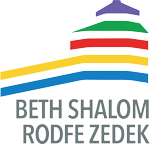Holy Scrollers Preview
Parashat Mishpatim
February 18, 2012
Rabbi Rachel Goldenberg
This week’s Parashah, Mishpatim, contains the laws of what has come to be known as the “Book of the Covenant.” Last week the people stood at the foot of Mount Sinai and directly experienced God’s powerful presence. They heard God pronounce a set of broad commandments of ethics and ritual. But the covenant doesn’t stop with broad statements and values as given in the Ten Commandments. The covenant isn’t concluded until this week, when God gives specific laws that govern people’s daily domestic, mundane lives. Not only do we receive a “Constitution” that sets out the core values of the society God expects us to create, but we also receive case law, and in the coming weeks and months, we’ll receive laws pertaining to the priests.
In Parashat Mishpatim we receive laws governing our daily lives, such as:“When a fire is started and spreads to thorns, so that stacked, standing or growing grain is consumed, the one who started the fire must make restitution.” (Exodus 22:5) And: “If you see the ass of your enemy lying under its burden and would refrain from raising it, you must nevertheless help raise it.” (Exodus 23:5)
The Etz Hayyim commentary quotes Moshe Greenberg who wrote, “Outside of Israel, you would have to go to three different addresses to get the material. . . in Mishpatim. The Torah combines law (as in the Code of Hammurabi), cultic instructions (as from a priestly manual,) and moral exhortation (as found in wisdom literature). This is the only Near Eastern literature in which an amalgam of these three interests is found: law, cult and wisdom.”
The Torah is unique in that all of these kinds of instructions are found in one place, and all of these instructions are part of a covenant with the Divine.
• What might this teach us about our unique brand of Israelite (or Jewish) spirituality? What does it mean to us that laws pertaining to the details of everyday human existence have a Divine source?
The Torah also stands out in contrast to the Code of Hammurabi and other Mespotamian documents in that the rules are set before the entire community. According to the Women’s Torah Commentary, “the Laws of Hammurabi stipulate that only the aggrieved party could have the laws read to him; in Mesopotamian society, public knowledge of the law was not assumed.”
Our Torah portion concludes with a very public ceremony in which the whole Book of the Covenant is read to the people. Then Moses conducts a sacrificial covenant ritual involving dashing blood on an altar and then dashing blood on the people. The covenant is transparent – its terms are known to all, and it includes everyone.
• How might this be experienced by a people who have just been freed from slavery, where rules were probably arbitrary and arbitrarily enforced? How does this system set up a different kind of power structure between the people and God versus the kind of power dynamic you might have in other Mesopotamian cultures?

No comments:
Post a Comment